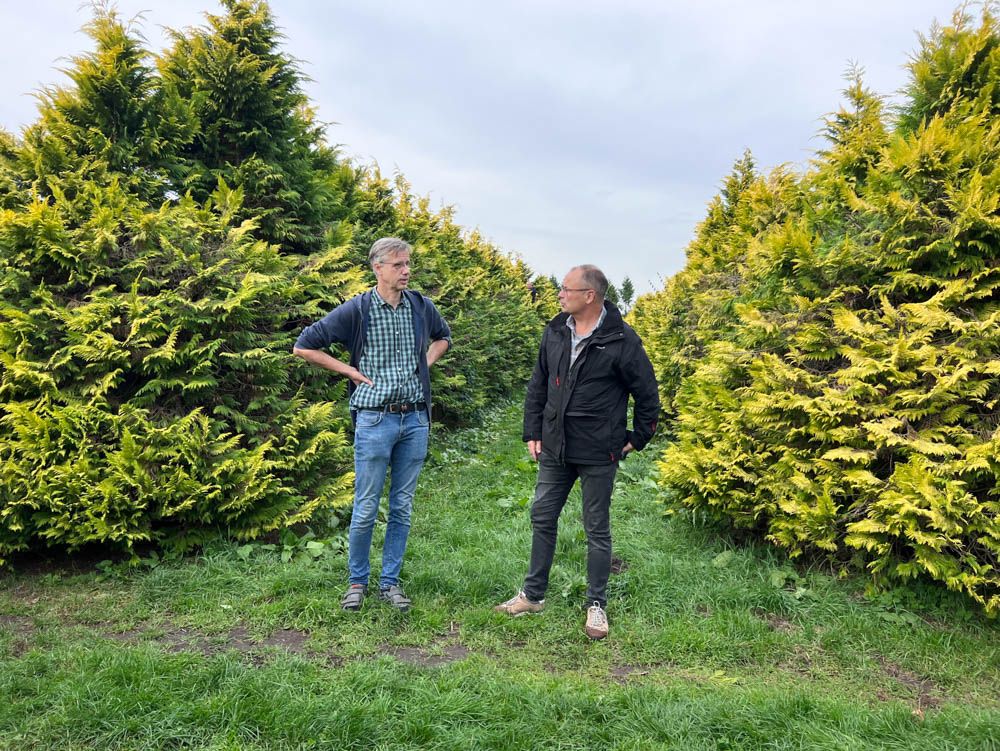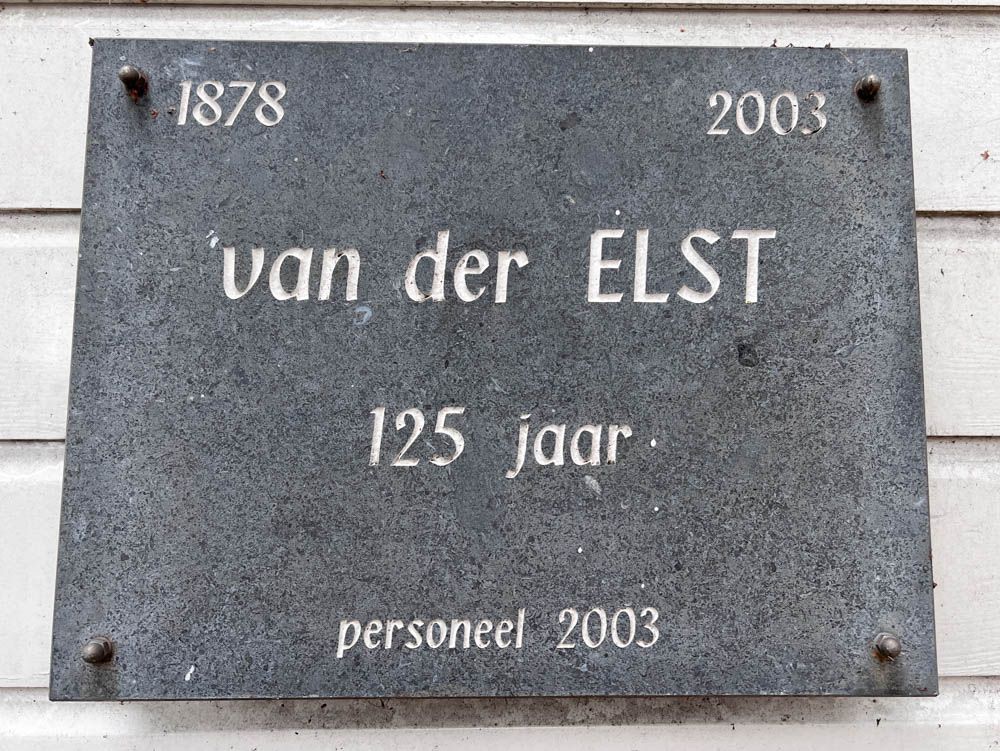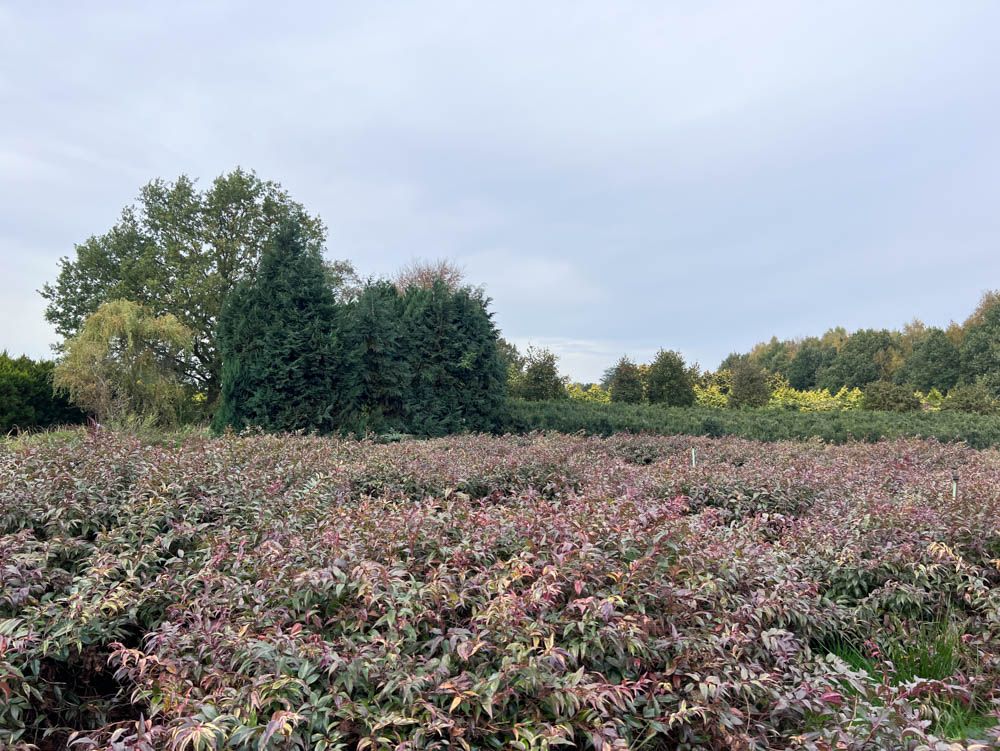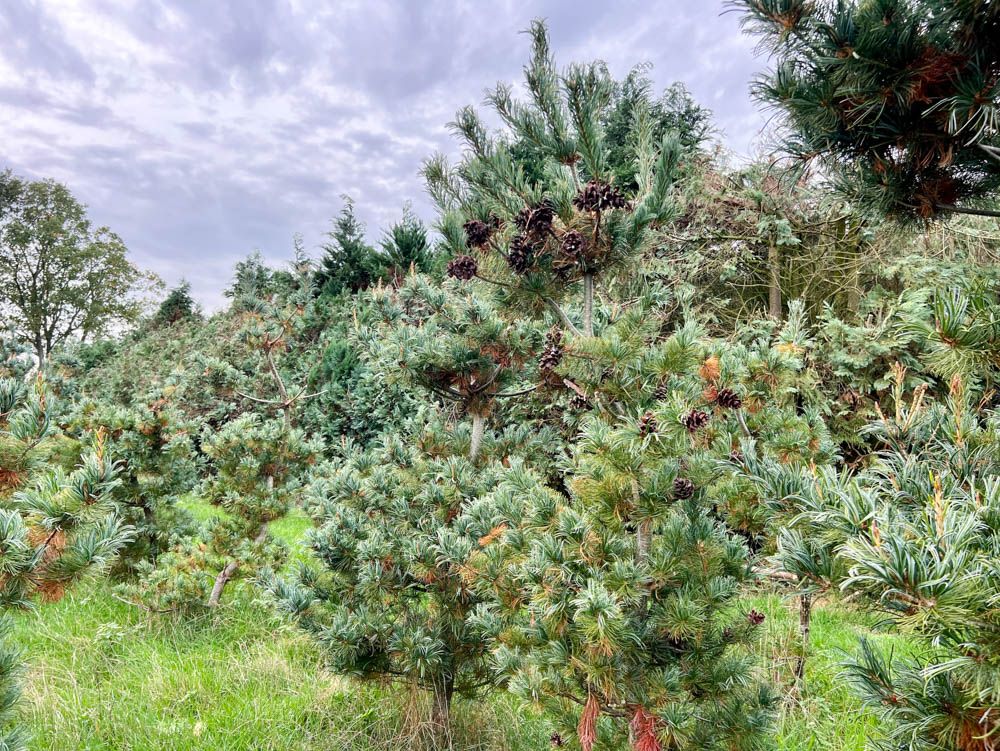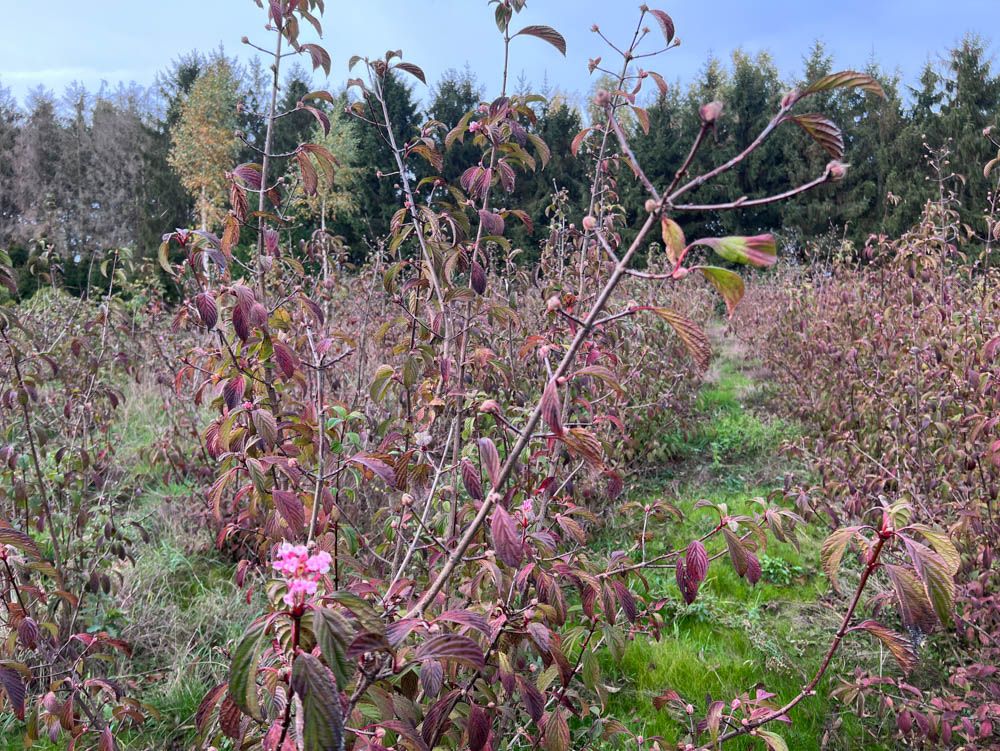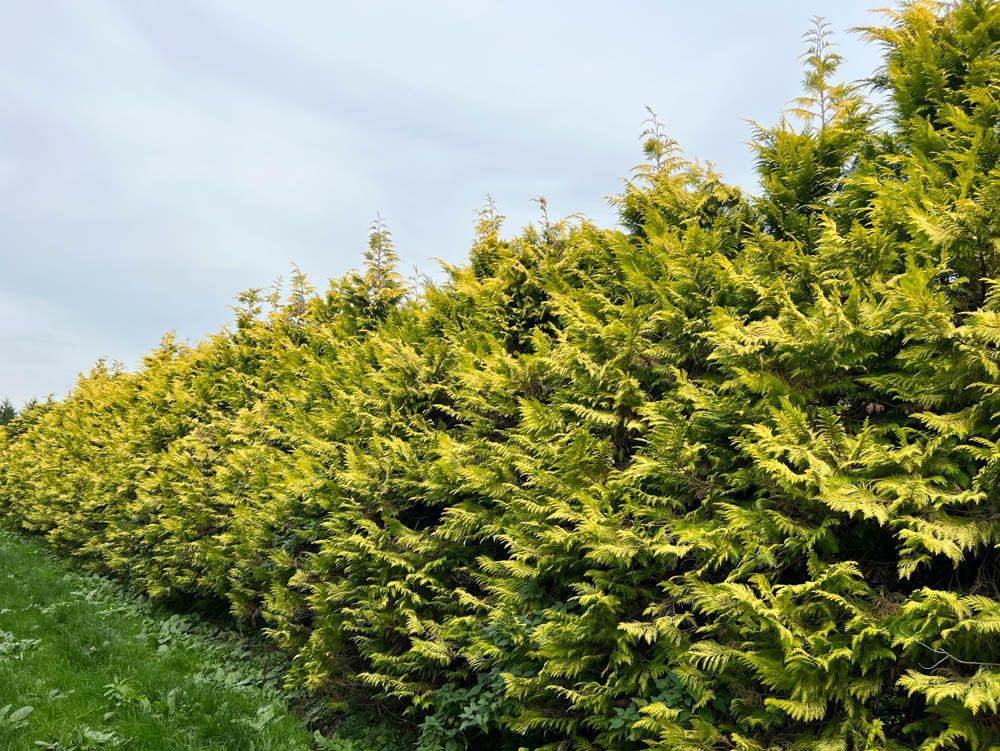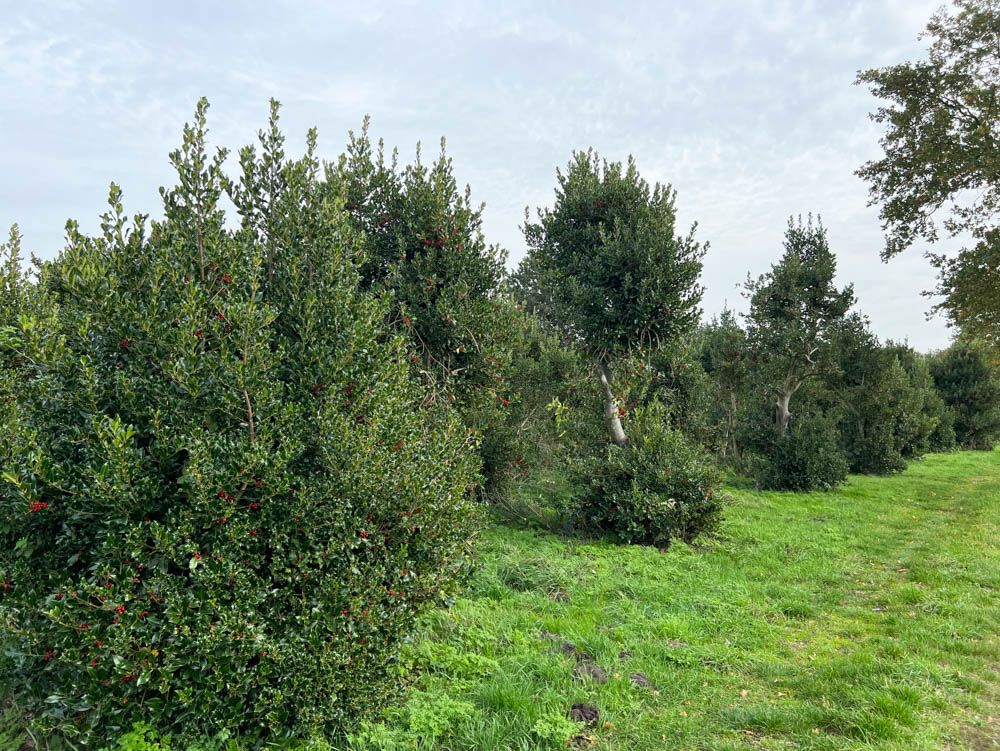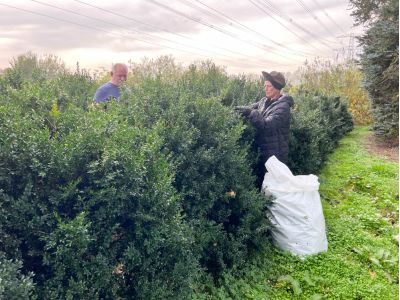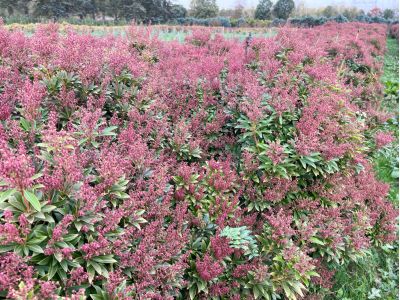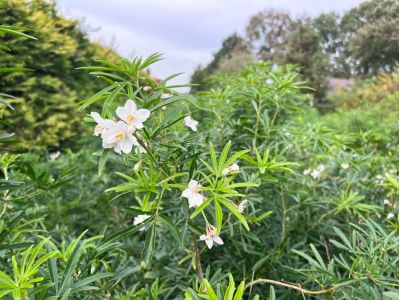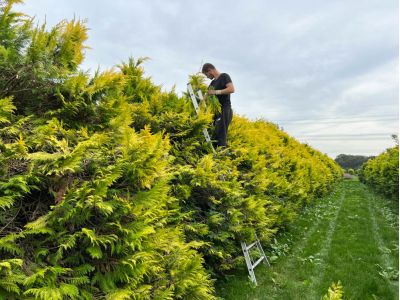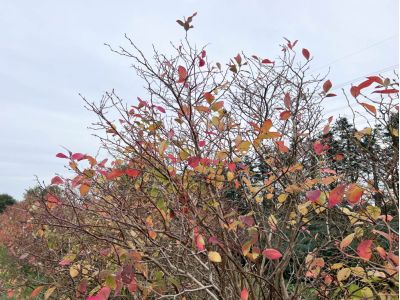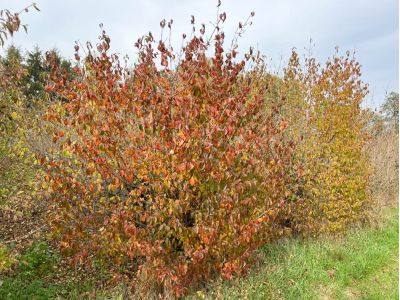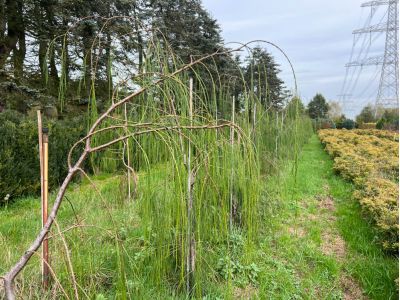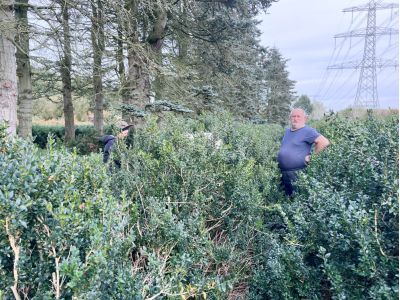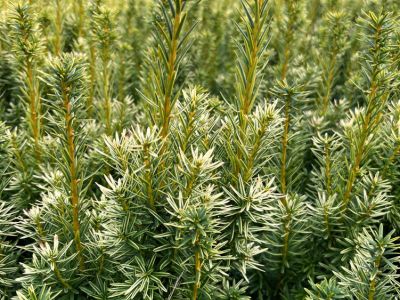Grower Van der Elst
In the spotlights
Conifers, Pieris, Holly, Leucothoe and many other evergreen species are indispensable in the months of November and December. These greens are widely used in bouquets, wreaths and other decorations for Advent and Christmas. Cut green nursery Van Der Elst specializes in producing all kinds of greenery. We took a look at the land of Erik de Jonge, who gave us an extensive tour.
Cut foliage nursery Van der Elst
Cut foliage nursery van der Elst has been active in cut foliage for more than 140 years and has a rich history. The estate has had several successors, but the name 'Van der Elst' has always been honored, named after the first founder. In the 1990s Erik was active in the company as a manager. In 2002 he took over the company. From September to March, Van der Elst produces more than 100 tons of cut foliage on 20 hectares of land, the peak of which (80%) is in November and December. It is very important to Erik that the wishes of the customer are listened to and that this is carried out in the right way.
Close to nature
We were overwhelmed by the tranquility and the large trees and shrubs on the estate. The amount of life in the garden was striking: birds, bees, insects and molehills, we saw all kinds of things. There are boxwood bushes that are over 40 years old, Nobilis trees from 1900 and the Pieris bushes growing under large old oak trees. Nursery Van der Elst is more than just a nursery, it’s a natural garden. Erik chooses the crops to fit the right plot of land and lets nature take its course.

Leucothoe
During our tour we saw the most beautiful and special products. A popular product among florists is Leucothoe. Leucothoe is originally from America and is known for its beautiful leaf color in autumn and winter. Due to its long vase life, Leucothoe can be used very well in bouquets or arrangements. The beautiful red color of the leaf of the Leucothoe is entirely dependent on the weather. The more hours of sunshine the plant gets in the summer, the redder the leaves turn in the autumn. As the nights get colder, the leaf green (chlorophyll) withdraws from the leaf into the main stem, giving the leaf a beautiful red/purple color.
‘Leucothoe is an intensive cultivation,’ says Erik. “The crop is low, you have to bend a lot and keeping it weed-free takes a lot of time.” The crop is also sensitive to frost in the spring. Erik has a sprinkler system hanging above the crop. When it starts to freeze late in the spring, he has the crop irrigated so that the young shoots do not break.
Ilex aquifolium (holly)
One of the oldest specialties over the years is the Holly. Holly has been used for centuries on various holidays and has different symbolic meanings. Holly is still very popular around the holidays and is widely used by florists and designers. But people also decorate their homes with this beautiful type of foliage.
To get beautiful berries, male and female plants are needed. In the spring, when all the trees are blooming, the female flowers are pollinated with the pollen from the male flowers, giving the female trees beautiful berries in the fall.
The red berries are initially poisonous to birds, but as soon as it gets colder, the starch in the berries is converted into sugars and the berries become very attractive to birds. Between the holly trees hang 'bird alarms' that imitate the sound of the birds of prey. A new way of animal-friendly pest control for us. Although he enjoys seeing the birds in the garden, Erik prefers to sell his holly with berries.
Pinus parviflora glauca
Our eye fell on a special Pinus species with a beautiful blue glow. In contrast to the well-known tight Pinus strobus, this type of very special 'wigs' and a bit of a whimsical shape. A true mood maker at Christmas and very suited for using in bouquets or decoration. It is however a variety that is a bit more difficult to grow than his other crops, Erik explains. The resin in the stems attracts roe deer. They eat it and damage the crop with their antlers, because they rub their heads against the bushes. It also takes at least eight to ten years before you can cut a plant. Erik takes this for granted, he believes in this crop, it is really an eye-catcher.
Viburnum bodnantense Dawn
In addition to various green varieties, Erik also has a number of exclusive shrub varieties on his estate, including the Viburnum bodantense Dawn. This Viburnum is a so-called naked bloomer. As soon as the leaves are gone, this crop produces beautiful small white/pink flowers that smell wonderful. These branches are fantastic for decoration. This year it bloomed very early as it is still extremely warm for the time of year. Erik expects the first cuts to be ready in December and January.
This Viburnum is also very beautiful as a garden plant. She develops beautiful red foliage in the fall, after which she flowers in the winter.
The cultivation
The estate covers about 20 hectares and holds many different crops, for instance beautiful conifers in the most stunning colors. Conifers also become more intense in color when it has been colder. And Boxwood, Taxus, Pieris, too many to mention. It was overwhelming and impressive.
Labor
The work mainly consists of keeping the crop weed free, caring for it and cutting the foliage when ready. It was a beautiful warm day during our visit, but as the peak months are in November and December, it is often cold and rainy when harvesting is due. Most crops can last for decades, but every now and then a corner has to be cleared. When planting a new crop, Erik makes a conscious choice and looks for what is in high demand from the market. Because most crops have to grow for six years before they can be harvested, he has to make well-considered choices.
Beautiful job
Cut green nursery Van Der Elst is MPS A+ certified. Erik grows close to nature, needs little pest control and that is what makes him enjoy his work so much The old Nobilis trees and hedges provide protection for roe deer, pheasants, foxes and other wild animals.
It makes Erik a very happy man to walk through the garden, overwhelmed by peace and tranquility. “Every time I walk through the nursery, I marvel at nature. Our role is actually small, everything that grows here grows on its own due to the rain, the (sun) light and the air (CO2). It feels very meaningful to be able to participate in this cycle and to be able to bring it into culture; to be able to harvest 'The light' in the form of many types of Christmas and decorative branches every autumn for 'the festival of light' (Christmas) and in this way to bring a nice atmosphere into people's homes."
FloraPodium, 17 November 2022






